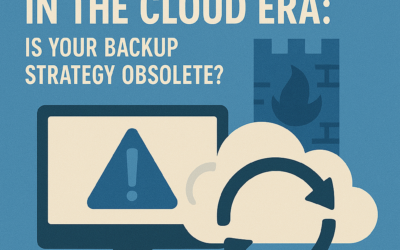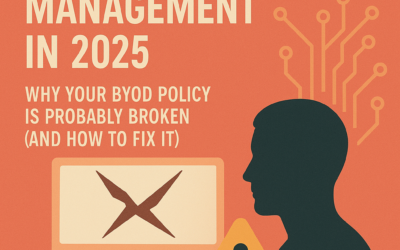According to the FBI, $4 million is the cost of an average breach.
Why?
Well, most folks take into account the cost of mitigation and reparations. In other words, how much will it cost them to patch and solve the issue?
What they don’t consider, and ultimately hurt their wallet even more, is the following factors: branding and operations.
How the attack hurt your branding efforts and the confidence the public has in you. How long your operations were hindered due to the attack. All of that adds up in the long run.
From the cost, it will have on your stock price in the market, to the fact that you might not be able to sell your product or services during this phase properly.
In today’s overly digital world, where cyber threats lurk around every bit-inspired corner, small and medium enterprises – SMEs – are increasingly vulnerable targets. There’s a vast payoff involved.
Take, for instance, the cyber attack that targeted “TechSavvy Solutions,” a mid-sized software development firm based in California. The attack, which exploited a vulnerability in the company’s network infrastructure, resulted in the theft of sensitive customer data and incurred substantial financial losses.
The company had to deal with reparations, a mountain of regulatory fines, and legal fees—in those two alone, the company had to shell out over $500,000.
This real-world example underscores the importance of implementing robust threat management solutions to safeguard SMEs against cyber threats.
This article will give you a quick overview and understanding of cyber threat management and some of the best practices small and medium businesses can employ.
Understanding Threat Management
Threat management is a critical line of defense against cyber attacks. It encompasses a proactive approach to identifying, assessing, and mitigating potential risks to an organization’s digital assets and operations.
The practice, in essence, has four corners to sit success — encompassing the following:
- Identification
- Assessing
- Prioritization
- Mitigation
Threats can come from all places, from various sectors, and are not limited to cybersecurity threats—malware, phishing attacks, data breaches, and ransomware—they can be economic downturns, fraud, negative publicity, media backlash, natural disasters, theft, non-compliance issues, etc.
But for this article’s sake, we will examine cybersecurity threats and how to manage them.
For SMEs, who often lack the extensive resources and dedicated cybersecurity teams of larger enterprises, mastering threat management is essential for protecting their business interests and maintaining operational resilience in the face of evolving cyber threats.
It’s a balancing act that usually considers risk assessment, prioritization, and budget allocation.
Real-World Cyber Attacks and Their Costs
Cyber attacks targeting businesses of all sizes have become increasingly prevalent and sophisticated in recent years. Here are five real-world examples of cyber attacks and their associated costs:
Ransomware Attack on Colonial Pipeline – 2021
A ransomware attack crippled the Colonial Pipeline, one of the largest fuel pipelines in the United States, resulting in a shutdown of operations for several days. The attack constituted an act of terrorism since it targeted a leading US supplier with ties to the government. The attack led to fuel shortages, disrupted supply chains, and incurred estimated losses of over $4.4 million in ransom payments and operational expenses.
Phishing Attack on Equifax – 2017
Equifax, one of the largest consumer credit reporting agencies, fell victim to a massive data breach caused by a phishing attack. What is a phishing attack? It’s when a malicious actor manages to con or trick an individual in an organization into divulging sensitive information such as passwords. The breach exposed the sensitive personal information of approximately 147 million consumers and resulted in regulatory fines, legal settlements, and damage to the company’s reputation, with total costs exceeding $1.4 billion.
Business Email Compromise – BEC – Attack on Toyota Boshoku Corporation – 2019
A BEC attack targeted Toyota Boshoku Corporation, a subsidiary of Toyota Motor Corporation. The cost? A series of unauthorized wire transfers totaling approximately ¥ $4 billion—roughly $37 million. The attack exploited compromised email accounts to deceive employees into transferring funds to fraudulent accounts, highlighting the financial impact of BEC attacks on businesses.
Data Breach at Marriott International – 2018
Marriott International, one of the world’s largest hotel chains, was the subject of a massive data breach. One that compromised the personal information of up to 383 million guests. The breach, which lasted for several years undetected, resulted in regulatory fines, legal settlements, and reputational damage, with estimated costs exceeding $72 million.
Cyber Attack on Maersk – 2017
Maersk, the world’s largest shipping company, was the victim of a cyber attack that disrupted its global operations. The attack was widespread and included container shipping and port operations. The assault, attributed to the NotPetya malware, caused widespread operational disruptions and incurred financial losses estimated at over $300 million.
These are just some of the thousands of attacks the world has experienced in the last few years. We used examples of titan-like industries to underscore that even with their vast resources, they couldn’t stop a breach. The truth is that the likelihood of an attack isn’t just high but inevitable. According to law-enforcement officials, businesses operating on the net will sooner rather than later find themselves under the focus of a digital criminal — they will be the subject of an attack; what matters is not only when – in other words, how long they can prevent one – but how they react to it.
This is why threat management is critical.
Challenges Faced by SMEs
SMEs encounter a buffet of cybersecurity challenges.
Limited budgets, resource constraints, and a lack of cybersecurity expertise exacerbate each and every one of them.
These mitigating and often crucial characteristics make them prime targets for cybercriminals. They know that, in most cases, they are digitally weak and ripe for the picking. Criminals seek to exploit vulnerabilities for financial gain or malicious intent.
More to the point, SMEs may underestimate the severity of cyber threats or their price. They may also be blind to them — unaware of the potential consequences.
This leaves them vulnerable to devastating cyber attacks with far-reaching implications for their business operations and reputation.
Best Practices for Threat Management
To help SMEs fight against cyber threats, we’ve compiled a quick, easy-to-follow list of DIYs they can employ — proactive cyber threat management practices that will be paramount to safeguarding their assets.
Here are some key strategies to consider
Regular Risk Assessments
Always be on guard. Conduct periodic risk assessments to identify vulnerabilities and prioritize security measures. Balance out what’s must with what’s not, based on potential impact and likelihood of exploitation.
Comprehensive Security Plan
Have a plan in place—develop and implement a comprehensive security plan. One that is tailored to your organization’s specific needs, one that takes into account preventive, detective, and corrective measures.
Employee Education and Training
95% of attacks are due to human error — that’s a fact. From employees giving out data, they shouldn’t give employees access to entry points outside their purview. Educate your staff on cybersecurity best practices and provide ongoing training to enhance awareness and foster a culture of security consciousness.
Utilize Threat Intelligence
Stay in the loop—cybercriminals are incredibly resourceful and inventive. They are constantly developing new attack vectors and tools. Leverage threat intelligence sources to stay informed about emerging threats and trends, enabling proactive threat detection and response.
Deploy Security Software and Tools
From firewalls to antivirus: Invest in robust cybersecurity solutions, including firewalls, antivirus software, and intrusion detection systems. Buy top-shelf tools that are constantly updated to bolster defenses against cyber attacks.
Embrace Multi-Factor Authentication – MFA
Might be a pain, But utilize multi-factor authentication. Think passwords and biometric authentication, such as fingerprint scans or face recognition. Implement MFA mechanisms to strengthen authentication processes and safeguard against unauthorized access to sensitive systems and data.
Backup Data Regularly
Keep a copy: Establish routine data backup procedures to ensure data integrity and facilitate timely recovery during a security incident or data breach.
Develop an Incident Response Plan
Do the paperwork: Create a comprehensive incident response plan outlining protocols and procedures for effectively managing and mitigating security incidents as they occur.
Don’t Think You’re Too Small
Just because you’re a small fish in a large pond doesn’t mean you won’t be a juicy target. Criminals are opportunistic.
They might not even want you; they might simply use you to target someone else—remember, you’re interconnected to other businesses—to financial institutions, to service providers, or you yourself are a service provider. Criminals might simply use you to piggyback onto a much more lucrative job.
Threat management solutions are critical for SMEs, enabling them to protect their digital assets and mitigate cyber risks effectively. By proactively implementing best practices and fostering a security-conscious culture, SMEs can enhance their resilience against cyber threats and safeguard their business continuity and reputation. As cyber threats continue to evolve and increase, SMEs must prioritize threat management and invest in robust cybersecurity measures to mitigate risks and protect their valuable assets from exploitation by cyber adversaries.




